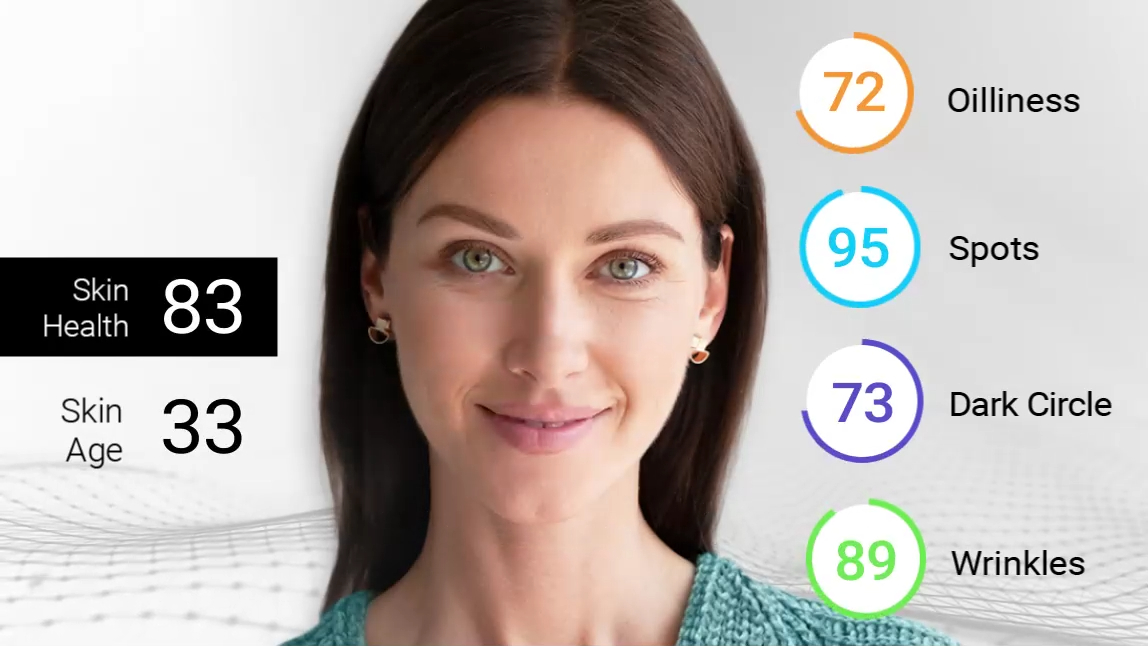Artificial intelligence (AI) advances are changing many aspects of our daily lives. The beauty and skincare industry is probably one of the most intriguing and useful examples. Determining skin type has long been difficult, as people usually rely on subjective self-assessment or observation of the skin’s surface. But now, AI has reached a level of precision that is changing the way people care for themselves.
In this blog post, we’ll discuss how AI can accurately determine your skin type, how it differs from other methods, and how you can use this technology to achieve healthier skin. Learn how AI skin analysis works, what its practical applications are, and how to choose the best tool for your needs.
Skin Type Recognition Using AI:
The introduction of AI in skincare creates exciting new opportunities for consumers and skincare professionals. AI doesn’t rely solely on human judgment, which can be affected by environmental changes, personal preferences, or a lack of scientific knowledge. Instead, it uses data to look at skin properties in a more in-depth, objective way. Artificial intelligence systems can quickly assess skin hydration, oiliness, pigmentation, pore size, and more using large data sets, algorithms, and real-time image recognition. This process allows for highly personalized skin care recommendations and better treatment results. As people seek safe, effective, and customized solutions, artificial intelligence for skin type recognition has become an important factor in improving skin health and beauty.
Traditional Methods and AI for Skin Type Testing:
In the past, skin type was determined based on standardized examinations and careful observation. Based on their observations and a few general questions about your habits and symptoms, dermatologists and estheticians can usually tell you whether your skin is oily, dry, combination, or sensitive. Experienced professionals can be quite accurate, but errors, biases, and interpersonal differences often make it difficult to be consistent. Also, many lack the tools and knowledge to assess their skin. As a result, they make the wrong product choices, and the skin care results are unsatisfactory.
Artificial intelligence changes this process by using rigorous data instead of biased judgments. The AI takes high-resolution photos of your skin and searches for patterns. This raw data is then sent to cloud-based analysis tools. These systems process data from tens of thousands or even millions of medical records and reference images to give you a personalized, highly accurate assessment, eliminating much of the guesswork associated with old methods.
How AI Algorithms Determine Skin Type:
Machine learning algorithms trained on a large and diverse database of skin images and clinical data are at the heart of AI-driven skin analysis. These methods take into account many important skin characteristics, such as skin texture, oil production, hydration, pore size, redness, and uneven pigmentation. Once you share or scan your skin with a special device or app, the AI system checks your profile against the database.
Thanks to the learning process, the AI can detect subtle differences in facial features and link them to things like age, race, and lifestyle. As the algorithm learns from new data and user reviews, it becomes more accurate. By observing patterns that humans miss in standard exams, AI can detect mixed or changing skin conditions. In addition to determining your current skin type, AI can also tell you how your skin might change in the future, so you can adjust your beauty routine before it happens.
How Precision Skin Analysis Works:
A clever combination of computer vision, neural networks, and real-time data processing makes AI skin detection work so well. High-resolution cameras can capture the tiniest details of the skin’s surface, while advanced sensors can monitor the amount of oil on the skin and the level of skin hydration. Artificial intelligence then uses deep learning networks to process the images and find complex patterns that human observers cannot see.
Cloud computing lets you process large amounts of data at once, ensuring that your results are based on the most complete and up-to-date reference material. Some AI systems use spectral imaging to observe different layers of the skin or track changes over time. As software and sensor technology advance, artificial intelligence becomes more powerful and accurate at analyzing data and making predictions, setting new standards in personalized skin care.
Benefits of Using AI to Identify Skin Types:
There are many benefits to using AI to determine your skin type, including accuracy and personalization. AI can’t make mistakes because it only uses data; it’s not dependent on human preferences or inconsistent environments. This feature ensures that you get an accurate skin type assessment no matter where you are, what season it is, or how much you know about your skin.
AI-driven analytics also support personalized product recommendations, reducing the likelihood of annoying or pointless purchases. Users receive clear, scientifically based advice on short- and long-term skincare strategies. When skincare professionals use AI, their clients are more satisfied because the recommendations and results are noticeably better. AI tools can also lower the barrier to entry for professional skincare by making professional analytics easily and affordably accessible to anyone with a smartphone.
Accuracy and Limitations of AI Detection:
Research has shown that AI systems can identify skin types 95% more accurately than traditional methods. But there are challenges. The quality of the initial data is critical; blurry photos or poor lighting can skew the results. Furthermore, AI can detect many patterns, but some rare or complex skin conditions still require professional interpretation.
Bias in training data can also reduce detection accuracy, especially for people with unusual skin tones or conditions that are not properly represented in the algorithm’s reference library. Responsible developers are working to address these issues by collecting larger and more diverse datasets. However, people should still use AI as a complement to professional advice, not a replacement, when making important skincare decisions.
How to Choose the Best AI Skin Analysis Tool?
There are more and more options on the market today, and when choosing a suitable AI skin analysis tool, you should pay attention to reliability and safety. Seek solutions specifically tailored for doctors, supported by user research or clinical trials. You can learn the pros and cons of a tool by reading user reviews, checking the privacy policy, and trying out the trial version.
It is important to adapt to your lifestyle. Some tools offer the ability to check your skin daily on your phone, while others are better used in a clinic. It is important to ensure that the AI platform can adapt to different skin tones, conditions, and settings. Platforms that value openness, regular updates, and easy contact with customer service or experts should be prioritized.
How AI Will Change the Future of Personal Skincare:
Using AI to assess skin is a major advancement in personal care. It offers accuracy, customization, and ease of use that were difficult to find with previous methods. AI uses complex formulas and extensive data to help you understand your skin’s specific needs so you can make better, more informed decisions. It bridges the gap between expert advice and easy access to help at any time. This feature allows for customized solutions and continued growth. AI skin assessment tools can transform your daily routine, whether you’re a skincare fanatic or just starting to take better care of your face. If you need help with something complicated, it’s best to consult a professional. However, know that AI is a wonderful starting point for anyone who wants healthy, beautiful skin.
FAQs:
1. Can AI skin assessment replace a visit to the dermatologist?
Artificial intelligence can accurately determine your skin type and help you with your skincare routine, but it should not replace professional advice, especially if you have severe or long-term skin problems.
2. Is my data safe in the AI Skin Research app?
Most reputable apps use strong security and privacy settings to keep your data safe. But you should always check their profile policies and permissions before using them.
3. When should I use AI tools to look at my skin?
It is best to use it regularly, such as once a week or once a month, so that you can see changes in your face and adjust your skincare routine if necessary.
4. Can AI distinguish between people with different skin tones?
Platforms trained on various datasets can often provide accurate results for different skin types. However, if the AI lacks training on similar material, its accuracy may suffer.
5. What should I do if the AI’s assessment of my skin does not match what I see?
Compare what the AI says with what you know from your experience. If you are still unsure, consult your doctor to rule out any underlying skin problems.

Pini Sharma is a health and beauty writer who wants to change the way people think about beauty by making it more open and innovative. Pini writes about the latest beauty technology and shares expert makeup tips at savepini.com. She has also spoken out about body positivity in a new and powerful way. Her goal is for everyone to feel good about themselves and express themselves freely.

